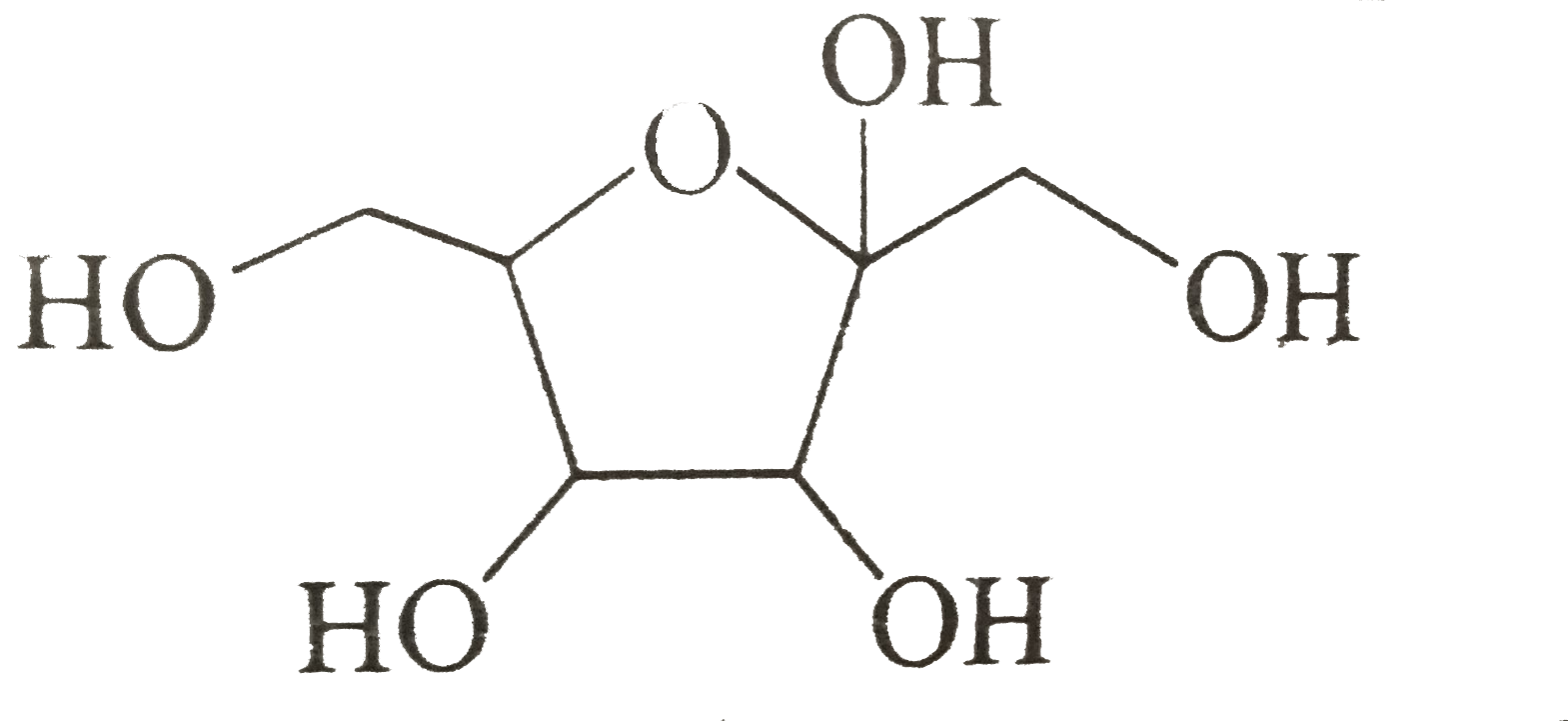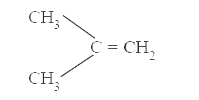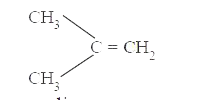Draw cis-trans isomers for the following compound.
(a)2-chloro-2 butene
(b)CH3−CCl=CH−CH2CH3Solution in Tamil
(a) 
(b) 
Topper's Solved these Questions
- HYDROCARBONSBOOK - SURA PUBLICATIONCHAPTER - HYDROCARBONSEXERCISE - Creative Questions (Hots)
4 Videos
- HALOALKANES AND HALOARENESBOOK - SURA PUBLICATIONCHAPTER - HALOALKANES AND HALOARENESEXERCISE - EVALUATE YOURSELF
8 Videos
- HYDROGENBOOK - SURA PUBLICATIONCHAPTER - HYDROGENEXERCISE - NUMERICAL PROBLEM
2 Videos
Similar Questions
Which salt of carboxylic acid will be required to prepared ethane by sodalime decarboxylation ? Give equation for the reation?
View SolutionWrite the IUPAC name of the following
(i) CH2=CH3∣C−CH2−Cl
(ii)
(iii)
View SolutionAn element (A) belonging to group number 1 and period number 3 react with dihydrogen to form an hydride (B). The element (A) reacts with the universal solvent to give a strong base (C). Identify A, Band C.
View SolutionWhich of the following alkanes can exhibit cis-trans isomerism? (i) CH_(2) = CHCH_(2)CH_(3) , (ii) CH_(2) = C(CH_(3))_(2) (iii) CH_(3)CH=CHCH_(3) , (iv) CH_(3)CH_(2)CH=CHCl
View SolutionDraw geometrical (or cis-and trans-) isomers of the following structures and give their IUPAC names. (i) C_(2)H_(5)C CH_(3)=C CH_(3)C_(2)H_(5) (ii) CH_(3)CH_(2)CH=CHCH_(2)CH_(3) Strategy: An isomer in which two identical atoms (or groups) lie on the same sides of the double bond is called as cis isomer whereas an isomers in which identical atoms ( or groups) lie on the opposite sides of the double bond is called a trans isomer.
View SolutionWrite the IUPAc name of the following compound :
(a) CH3−CH2−CH3∣CH−CH=CH−CH2−CH3
(b) CH3−CH2−CH3∣CH−CH2−CH3∣CH−CH∣CH2∣CH2∣CH−CH3∣CH3−CH=CH3∣C−CH3
View SolutionWhat is the maximum number of steroisomers possible for each compound?
(a) CH3CH(OH)CH(OH)CH2CH3 (b) CH3CH2CH2CH(CH3)2

View SolutionWhich of the following compounds will show cis-trans isomerism? (i) (CH_(3))_2C=CH-C_(2)H_(5) (ii) CH_(2)=CBr_(2) (iii) C_(6)H_(5)CH=CH-CH_(3) CH_(3)CH="CC"lCH_(3)
View Solution(a) CH3−CH=CH−CH=CH−C2H5 (Molecule with dissimilar ends).
Here n=2, So Number of G.I = 4 [cis, cis), (trans, trans), (cis, trans,), (trans, cis)]
(b) CH3−CH=CH−CH=CH−CH3 (Molecule with similar ends)
Here n=2, So Number of G.I =3 [(cis, cis), (trans, cis), (cis, trans) = (trans, cis)]
(c) CH3−CH=CH−CH=CH−CH=CH−CH3 (Molecule with similar ends)
Here n=3, So Number of G.I =6
[(cis, cis, trans)= (trans, cis, cis) (cis, trans, trans) = (trans, trans, cis), (cis, cis, cis) (trans, trans, tans), (cis, trans, cis, (trans, cis, trans)]
(d) Let us draw the total stereoisomers of CH3−⋆CH∣OH−⋆CH∣OH−⋆CH∣OH−CH3
(e) Let us draw the total stereoisomers of CH3−⋆CH∣OH−⋆CH∣OH−CH3
(f) Let us draw the total stereoisomers of CH3−CH(OH)−CH2−CH=CH−CI
View Solutionनिम्नलिखित यौगिक का सही नाम है -
CH3 |CH3CH2−C=CH−CH−CH2−CH3 |CH3CH2−CH−CH2−CH2−CH3
View SolutionDraw cis trans isomers for the following comounds (a) 2 lchoro 2 butene (b) CH_(3)-CH=CH-CH_(2)-CH_(3)
View Solution(i) How does Huckel rule help to decide the aromatic character of a compound? (ii) Draw cis-trans isomers for the following compounds (a) 2-chloro-2-butene (b) CH_(3)-C CI=CH-CH_(2)CH_(3)
View SolutionArrange the following in the increasing order of stability. CH_(3)CH_(2)CH=CH_(2), CH_(3)CH=CHCH_(3)(cis), CH_(3)CH=CHCH_(3)" (trans)"
View SolutionArrange the following in the increasing order of stability.
CH3CH2CH=CH2,CH3CH=CHCH3(cis),CH3CH=CHCH3 (trans)

View SolutionArrange the following in the increasing order of stability.
CH3CH2CH=CH2,CH3CH=CHCH3(cis),CH3CH=CHCH3 (trans)

View Solution
